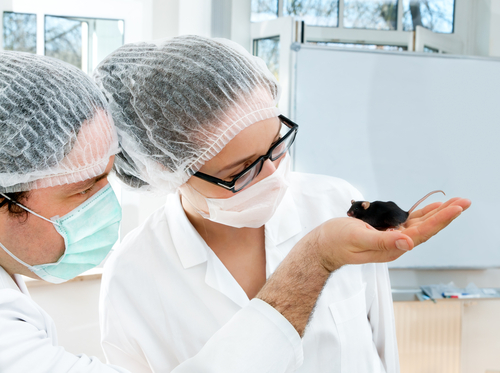Experimental Cell Therapy Improves Cardiac Function in Mouse Model of DMD, Study Says

Treatment with a cell therapy candidate called dystrophin expressing chimeras (DECs) increased dystrophin levels in heart muscle and improved cardiac function in mice with Duchenne muscular dystrophy (DMD), a study has found.
This cell therapy, by Dystrogen Therapeutics, will be tested in a clinical trial involving DMD patients, with first results expected by the end of 2020, the company announced.
The study, “Cardiac Protection after Systemic Transplant of Dystrophin Expressing Chimeric (DEC) Cells to the mdx Mouse Model of Duchenne Muscular Dystrophy,” was published in the journal Stem Cell Reviews and Reports.
Due to mutations in the DMD gene, patients have little to no dystrophin, a key protein in providing structural support and protection to muscles.
In the heart, lack of dystrophin results in cardiac muscle disease, or cardiomyopathy. Although gene therapy can be used to treat DMD-associated cardiomyopathy, its ability to restore dystrophin levels in cardiomyocytes (heart muscle cells) has been limited.
Stem cell transplants may be more effective and include two types: autologous, which uses the individual’s own stem cells, and allogeneic, which uses stem cells from a donor. As any transplant may induce an immune response, treatment with immunosuppressants is required. The data about the efficacy of these approaches, however, remain insufficient.
DECs are established ex vivo (meaning outside of the body) by fusing myoblasts — intermediates between stem cells and mature muscle cells — from a healthy human donor with myoblasts from a DMD patient. This cell therapy maintains the ability to produce normal levels of dystrophin.
Previous preclinical studies showed that transplant of DECs into a mouse model of DMD increased the levels of dystrophin and normal myoblasts, while also reducing inflammation. The treatment significantly improved muscle strength and function. Importantly, it reduced immune responses and the requirement for immunosuppression.
To better assess the treatment’s therapeutic potential, a team at the University of Illinois at Chicago used both myoblasts and mesenchymal stem cells (MSCs) from a DMD patient to produce DECs. The researchers transplanted half a million DECs into the bone marrow of mice, which were analyzed at five months of age, before the onset of cardiac dysfunction.
Results showed that, after 90 days, dystrophin levels in cardiac muscles significantly increased — 15.7% with myoblasts and 5.2% with the MSCs-based cell therapy — when compared to the controls (2%).
Compared to results at 30 days of treatment, heart scans at day 90 showed an increase in ejection fraction (a measure of the heart’s ability to pump blood) from 53.5% to 59.1% with myoblasts and from 61.4% to 70.4% with MSCs.
Fractional shortening, which assesses systolic function (the ability of the heart’s ventricles to contract), also increased from day 30 to day 90 with DECs — from 27.4% to 30.2% with myoblasts, and from 31.5% to 37.1% with MSCs.
In contrast, control mice showed continued decreases in both heart function measures at day 90.
Overall, “our study confirms feasibility and efficacy of DEC therapy on cardiac function and represents a novel therapeutic strategy for cardiac protection and muscle regeneration in DMD,” the researchers said.
“These findings are potentially significant for the treatment of DMD,” Maria Siemionow, MD, PhD, the study’s lead author, Dystrogen’s chief scientific officer, and the therapy’s inventor, said in a news release.
Kris Siemionow, MD, PhD, Dystrogen’s CEO, added: “These data add to the growing body of literature supporting the potential of our chimeric cell platform to restore systemic muscle function, with less potential side effects then gene therapy-based approaches.”
“We are very pleased to have these data published in a highly relevant journal for the field and look forward to further exploring this opportunity,” he added.






